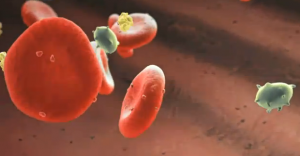Hereditary hemochromatosis is a genetic disorder that causes excessive absorption of iron by the body from the consumed food. Such excess iron is then accumulated in various organs such as the liver, pancreas and the heart. The storage of excessive iron in these organs can lead to several fatal diseases such as liver abnormalities, cardiac conditions and cancers.
The symptoms of hereditary hemochromatosis may show up once an individual reaches middle age, but they may occur earlier as well. Some such signs that form due to hereditary hemochromatosis include impotence, fatigue, joint and abdominal pain.
Hereditary hemochromatosis is generally difficult to diagnose, but if detected, it can be treated by the removal of blood which lowers the iron levels in the body.
Some other types of hemochromatosis include:
- Neonatal hemochromatosis: This leads to rapid accumulation of iron in the neonate’s liver and may eventually result in fatality.
- Juvenile hemochromatosis: It is caused due to a mutation of the gene known as hemojuvelin; unlike hereditary hemochromatosis which is caused due to HFE gene abnormalities. Juvenile hemochromatosis is also an inherited disease and also results in excess collection of iron. However, this process commences a lot earlier with signs appearing between the ages of 15 and 30 years.

Symptoms of hemochromatosis
Most of the symptoms of hereditary hemochromatosis are similar to those elicited by other common ailments leading to difficulties in effective diagnosis. Some of the signs and symptoms of hereditary hemochromatosis are as follows:
- Fatigue
- Joint pain
- Impotence or loss of libido
- Abdominal pain, especially on the upper right side of the abdomen
- Normal menstruation deficits or amenorrhea
Some individuals may never show any symptoms while others with hereditary hemochromatosis may experience a number of problems. Such issues may vary between men and women and from one person to another.
Even though hereditary hemochromatosis is a congenital condition, it does not show symptoms till one has reached midlife. Most men elicit signs between ages of 30 and 50, while women generally show symptoms after 50 or menopause, when there is no loss of iron from the body due to menstruation.
Hereditary hemochromatosis, if left untreated can result in a number of medical complications, especially in those areas and organs which has excessive buildup of iron.
- Hereditary hemochromatosis can lead to severe damage of the liver and result in Cirrhosis, liver cancer and other fatal conditions
- Damage to the pancreas can result in debilitating and chronic conditions such as diabetes.
- Excessive collection of iron in the heart due to hereditary hemochromatosis can affect its ability to pump blood to the various tissues of the body. In addition to congestive heart failure, it can also lead to irregular heart rhythms which can cause symptoms such as lightheadedness, chest pain and cardiac palpitations.
- Increased deposition of iron in the skin cells may result in skin color changes causing it to look more bronze or grayer.
Causes of hemochromatosis
- There is a particular gene that regulates the amount of iron that is absorbed by the body from food. Hereditary hemochromatosis is caused due to the mutation of that gene and such mutated genes are passed from the parents to their children
- A gene known as HFE is the one that is most often mutated in patients with hereditary hemochromatosis. Each of the parents passes on one HFE gene to the child and if both such genes are mutated, then the risk to developing hereditary hemochromatosis is greater. The two most common mutations of the HFE gene are C282Y and H63D. Genetic testing is one of ways to diagnose the presence of mutated HFE genes.
- An individual with two mutated HFE genes may develop hemochromatosis and may pass on the condition to their children
- An individual with only one abnormal HFE gene will not develop hemochromatosis, but is a carrier of the gene mutation and likely to pass it on to the children
- The male gender, people of Northern European ethnicity and those with a strong family history of hemochromatosis are greater risk to developing the disorder than others.
Iron is important for a number of body functions which include the formation of blood. Generally ten percent of the iron is absorbed from the food. Iron absorption is diminished, if the iron present in the body is sufficient.
In patients with hereditary hemochromatosis, the body absorbs nearly 30 percent of iron from the ingested food. There is no way to eliminate it and hence it gets stored in the various body organs. As the years go by, the accumulated iron causes severe damage to the organs leading to life threatening conditions.
Treatment of hemochromatosis
- Hemochromatosis is effectively treated by doctors by the removal of blood from the body, which is similar to the process of donating blood. However, in this case it is done to reduce the iron content in the blood. The amount of blood removed depends on the doctor and the general health and age of the patient.
- Once the iron levels have become normal, the removal of blood needs to be continued, albeit at a lesser frequency of only 4 to 6 times in a year.
- In case, there is organ damage due to hereditary hemochromatosis, then those conditions are treated as per the respective diagnosis.
- In case, removal of blood is not possible due to cardiac abnormalities, then the doctor may prescribe oral or intravenous administration of certain medications that will allow the body to expel iron either from the stool or urine.
- Also, the patients need to make certain dietary changes that would limit the intake of iron via food and also abstain from alcohol.